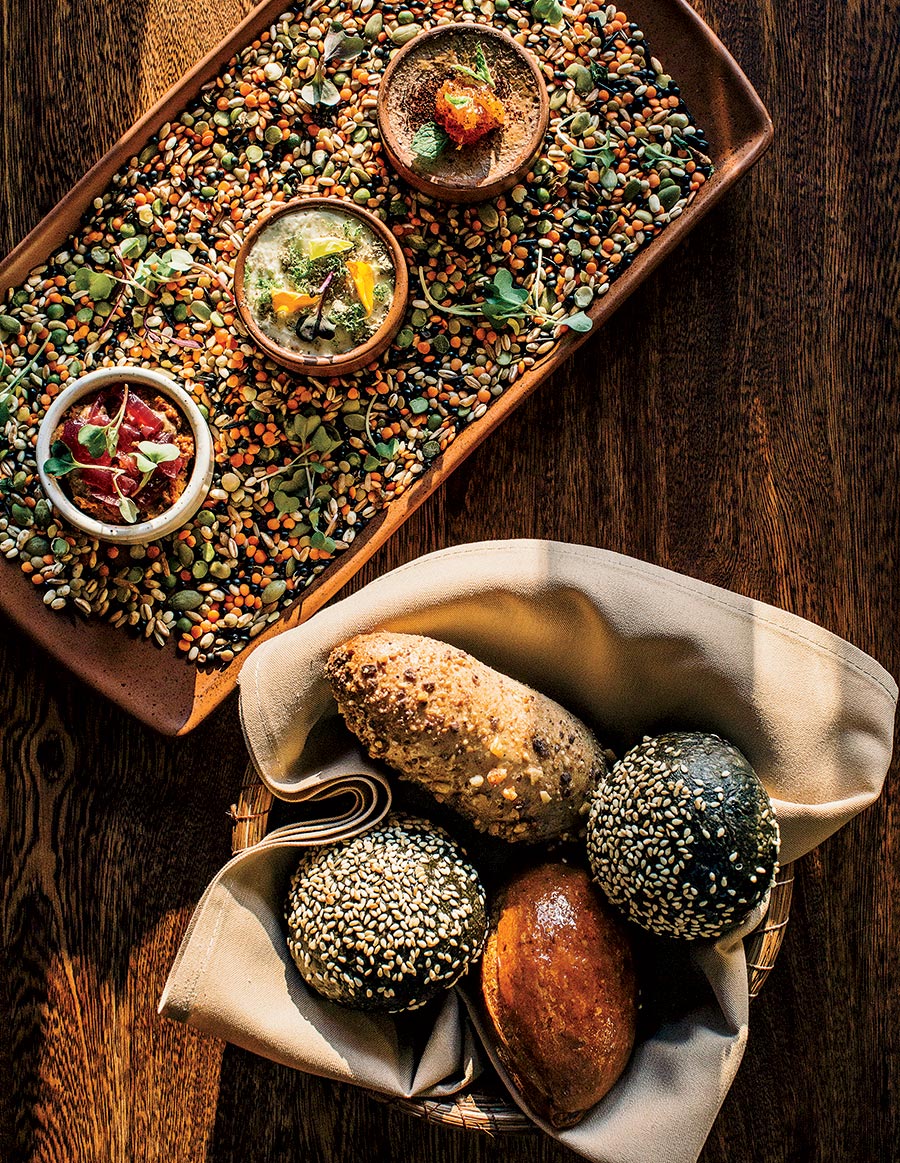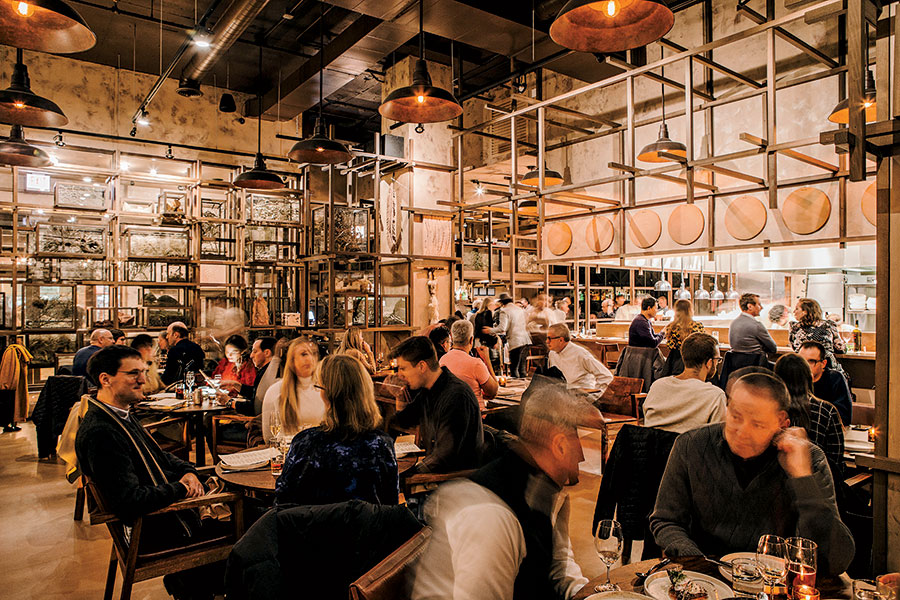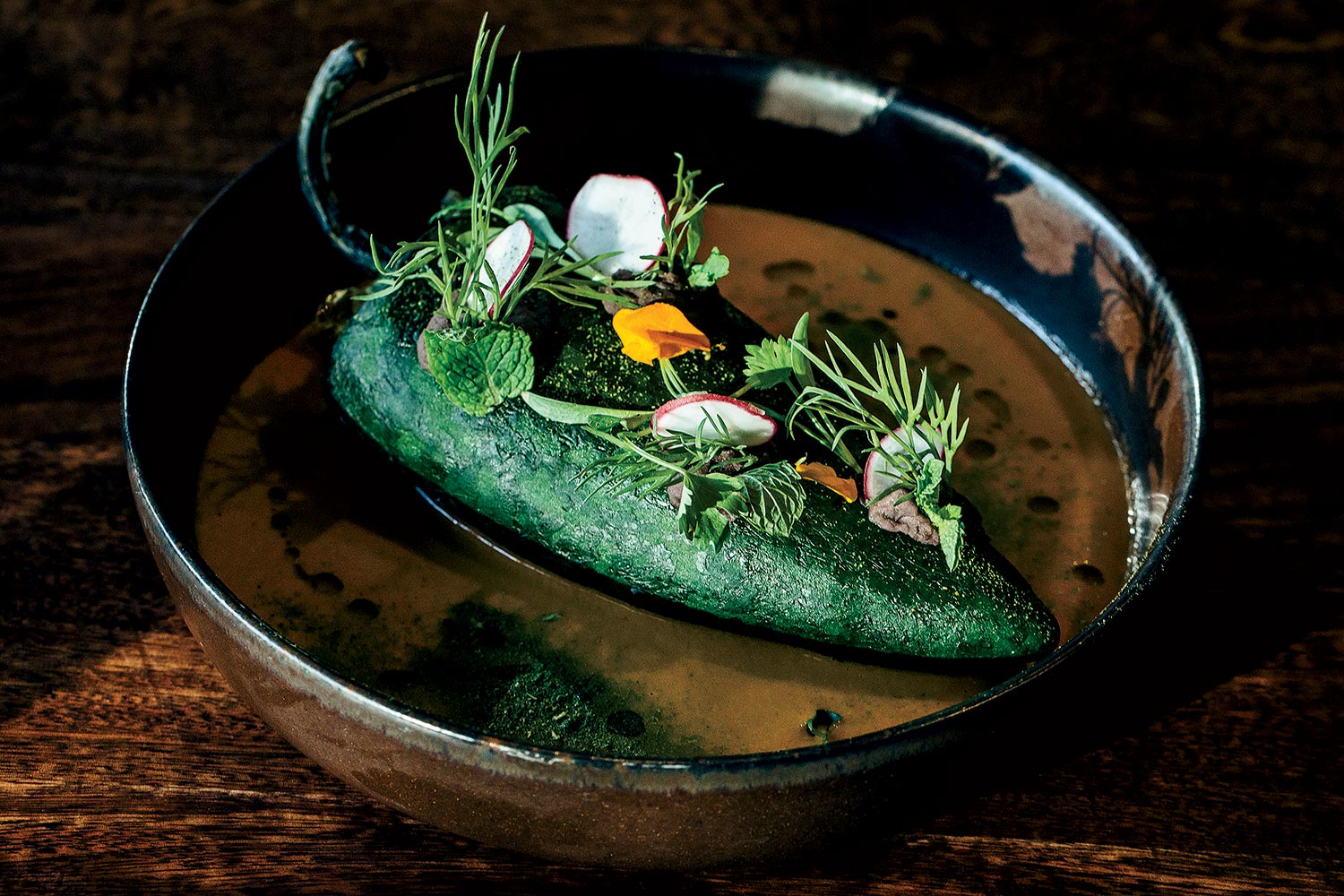When a lauded chef closes a restaurant that simply isn’t working, it’s sad. But when a chef closes a restaurant that everyone loves, it physically hurts. I hadn’t been to Mexique in ages when it shuttered abruptly in 2018, yet I immediately felt its absence. Carlos Gaytán’s tiny and adored West Town spot had weathered 10 up-and-down years, drawing crowds for its Mexican-French mash-up, losing them as buzz died down, then earning a Michelin star, then losing it. Throw in a Top Chef stint and a divorce from his longtime wife, Iliamar — who owned the Mexique space — and Gaytán’s history in this town has got enough drama for a Netflix series.
Losing Mexique may have been a tough blow, but Gaytán didn’t stop to lick his wounds. He’d gone from living in the country illegally, with a borrowed passport, to becoming a bona fide culinary darling, and now his circuitous path sent him back to Mexico to open Ha, a restaurant in Playa del Carmen’s Hotel Xcaret. Meanwhile, he reconnected with the cuisine of the country he’d left 27 years earlier, ultimately finding restaurateurs in Mexico City who wanted to help him prove himself once again in Chicago.
And so, this fall, Gaytán launched not one but three restaurants, all at the same Near North Side address: Panango, a three-meal-a-day grab-and-go bakery; Tzuco, a love letter to his Guerrero hometown of Huitzuco; and a tasting-menu concept preciously named Tales of Carlos Gaytán. Ever-ambitious, Gaytán says he wants Tales to be the best Mexican restaurant in the world — which, whoa there, mister — and he’s positioning his new trio as the first real challengers to Rick Bayless’s strongholds, eight blocks south.
Tales may be the logical extension of Mexique’s upscale ambitions, but I suspect Gaytán’s new empire will live or die with Tzuco (pronounced ZOO-ko), a bustling 110-seat restaurant inspired by the homestyle cooking and heirloom recipes of the chef’s youth. Designer Ignacio Cadena reimagined the former Roy’s space as an earth-toned museo de Pinterest full of thorny vines, leather chairs, and glass cases filled with cornhusks and figurines. Even the most personal touches, like Gaytán’s first comal, which hangs over a booth near the kitchen, feel fussed over.
If Mexique’s food was all heart, then Tzuco’s is pure cojones. The vast menu brims with brawny dishes reliably executed by chef de cuisine Andrew Kim (Avec, Acadia) in the open kitchen. From the guajillo-rubbed skate wing that feels plucked from a beachside shack in Puerto Vallarta to the poblano-smoked French onion soup bubbling with a blend of Gruyère and Chihuahua cheeses, everything seems brash and yet engineered to please. Paying that stiff Near North Side rent can’t be easy, and Gaytán’s prices reflect that, but I didn’t see anyone complaining about spending $12 for four warm housemade breads and a trio of spreads, including a chicken liver pâté and a fruit marmalade with cochinita pibil rillettes.

As for the dozen or so other appetizers, you could close your eyes and point to the menu and you’d likely get a masterpiece with a great story. Say, the pulpo enamorado (“octopus in love”), an homage to the tuna-potato salads that Gaytán’s mother, Doña Teté, used to pack for the mountain hikes of his childhood. Gaytán boils an octopus for 45 minutes to tenderize it, then roasts it in the wood-burning oven for five minutes, until an outer char gives way to an inner tenderness that borders on creamy. Dabs of tuna aïoli dial up the richness, and a tartare-like potato salad studded with carrots and peas stabilizes it. He also approaches familiar options in inventive ways — namely, the guacamole, which is topped with a dried, aged Huitzuco cheese that tastes like Parmesan baptized in paprika, and roasted grasshoppers, which taste like roasted grasshoppers.
It’s all supposedly shareable, but it’s easier to split, say, a generous steak tartare than an order of esquites, a small bowl of sweet corn that’s been boiled with epazote, goosed with saffron, and served in corn stock with more of that Huitzuco cheese. The frenzied kick of chile de árbol ensures that Tzuco’s version will create a potent memory of its own.
Main courses are showstoppers, one and all. Trout, long the bridesmaid of fish, is wrapped in a cornhusk and cooked in the wood-burning oven until it soaks up a deep smoky flavor. Then it’s stuffed with a thick tomato-almond pesto and topped with an avocado-tomato salad. Gaytán’s version of Guerrero-style slow-roasted pork is made from his mother’s exact recipe, and the act of folding a hunk of the tangy, fatty pork shank into a housemade tortilla, eating it fast, and feeling the aftershock of habanero pickled onions and pineapple vinegar was one of my favorite restaurant experiences of 2019.

If Tzuco has a weakness, it’s dessert. The Pingüino, a take on the familiar cream-filled chocolate snack cake, tastes so much like the real thing that it took me a moment to recognize it was no better than the real thing. Meanwhile, the jericalla, a flan–crème brûlée hybrid reportedly created by a Spanish nun in a Guadalajara orphanage, had curdled a bit too much for my taste.
But those are quibbles in the grand scheme of the restaurant. Tzuco is polished and assured. The question is: Can it stay that way? The danger with a restaurant of this size — especially one sharing an umbrella with two other concepts — is the whole venture turning into a slick, churning hospitality machine. I don’t see that happening. For one, Tzuco feels soulful, thanks to its backstory and a razor-sharp focus on lush flavors. Every staff member was prompt, sweet, and informed, just as jazzed describing the xocolatl mole bitters in the old-fashioned as they were explaining why you would love the chicharrón de pescado. They know what I know: Carlos Gaytán is back, and Tzuco is one of the best Mexican restaurants in Chicago.




Comments are closed.